Our Soda Springs Pit Stop
Passing through Southeast Idaho while heading to the Grand Tetons, we needed a quick break. Our Soda Springs pit stop was an unplanned part of the trip, but ever so welcomed.
We stopped at Corrigan Park (commonly referred to as City Park) on the main highway. While kids enjoyed the playground, I took a quick, easy walk down the sidewalk.
What did I find? Pieces of the area’s rich history on display! Here’s a little Soda Springs history I knew nothing about….
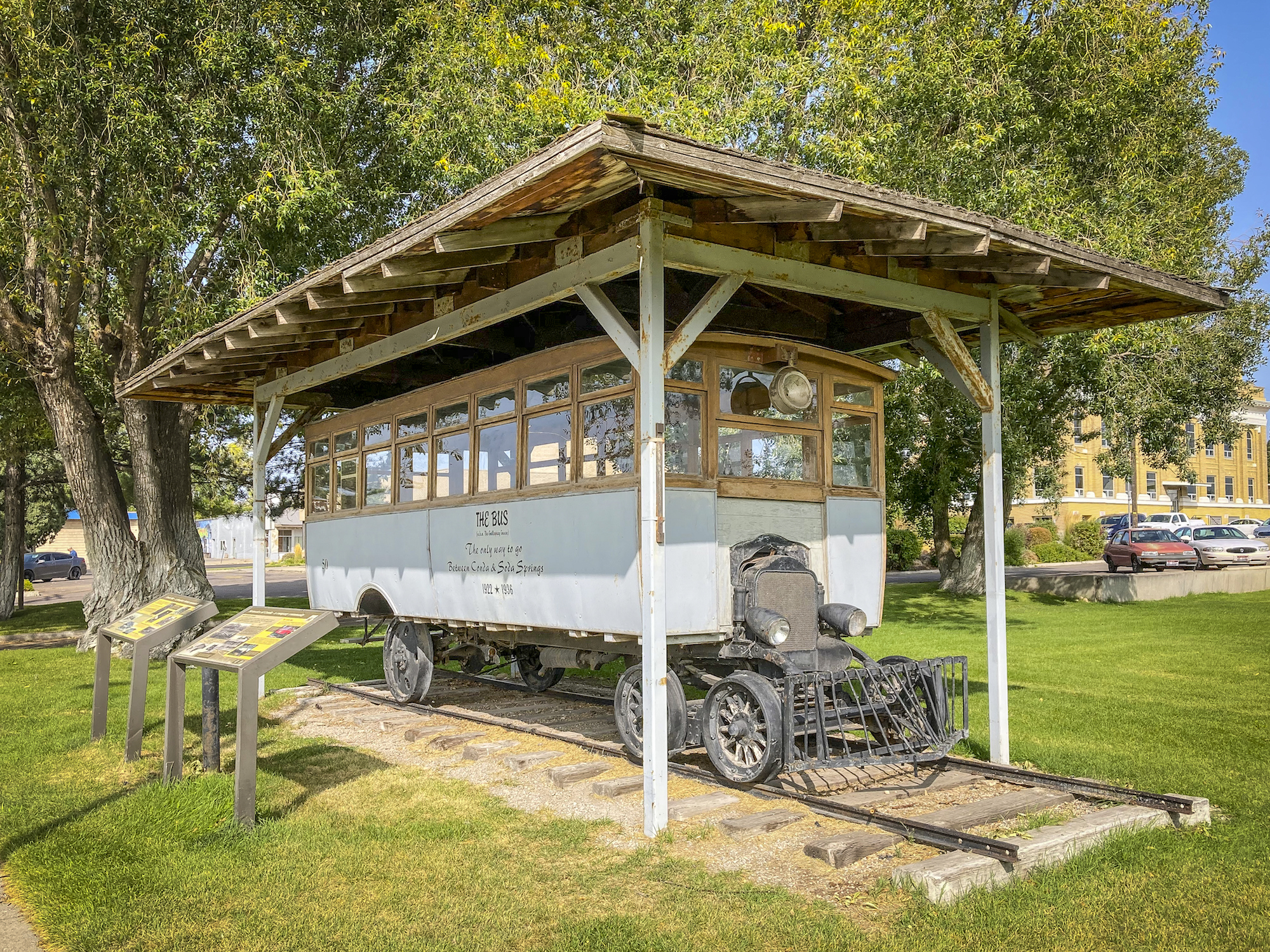
Restored railway bus on display in Soda Springs City Park
#1 - The Mine, Conda, and "The Bus"
Idaho is famous for potatoes but did you know this corner of the state is a major mining region? Yep, it is and has been since the turn of the 20th century.
A fortune in phosphate, suitable for fertilizer and heavy metal production, was unearthed. When demand for metals increased in the 1920’s, mining activity boomed. Hence, the Conda mining town was built.
The Town of Conda
Located 8 miles northeast of Soda Springs, the Anaconda Copper Mining Company built the town to house miners and their families. Employees could rent a house for $12 a month and watch free movies shown twice each week. A school, meeting hall, store, offices, and a bunkhouse were also part of the little community of nearly 300.
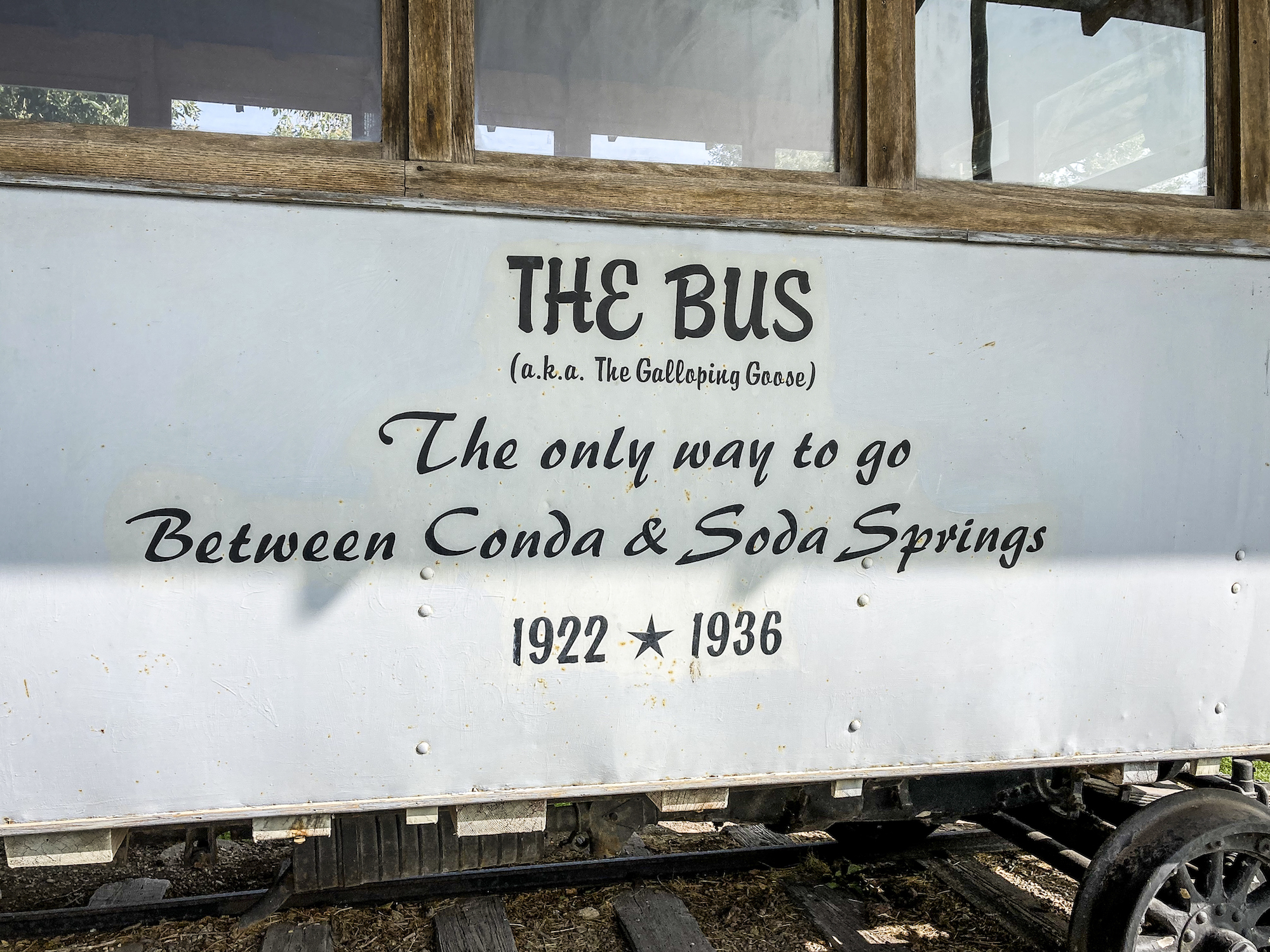
The Conda mine employees and families had free travel to and from Soda Springs via “The Bus.”
“The Bus”
Travel to and from Conda during winter was difficult so the company offered free travel for employees and families. A unique rail car called “The Bus,” also known as The Galloping Goose, ran along the Union Pacific rail lines between the two towns.
The advent of snow plows and improved roads made “The Bus” obsolete. Usage stopped after 1936. It is now restored, housed under an open-air pavilion, and on display at the park.
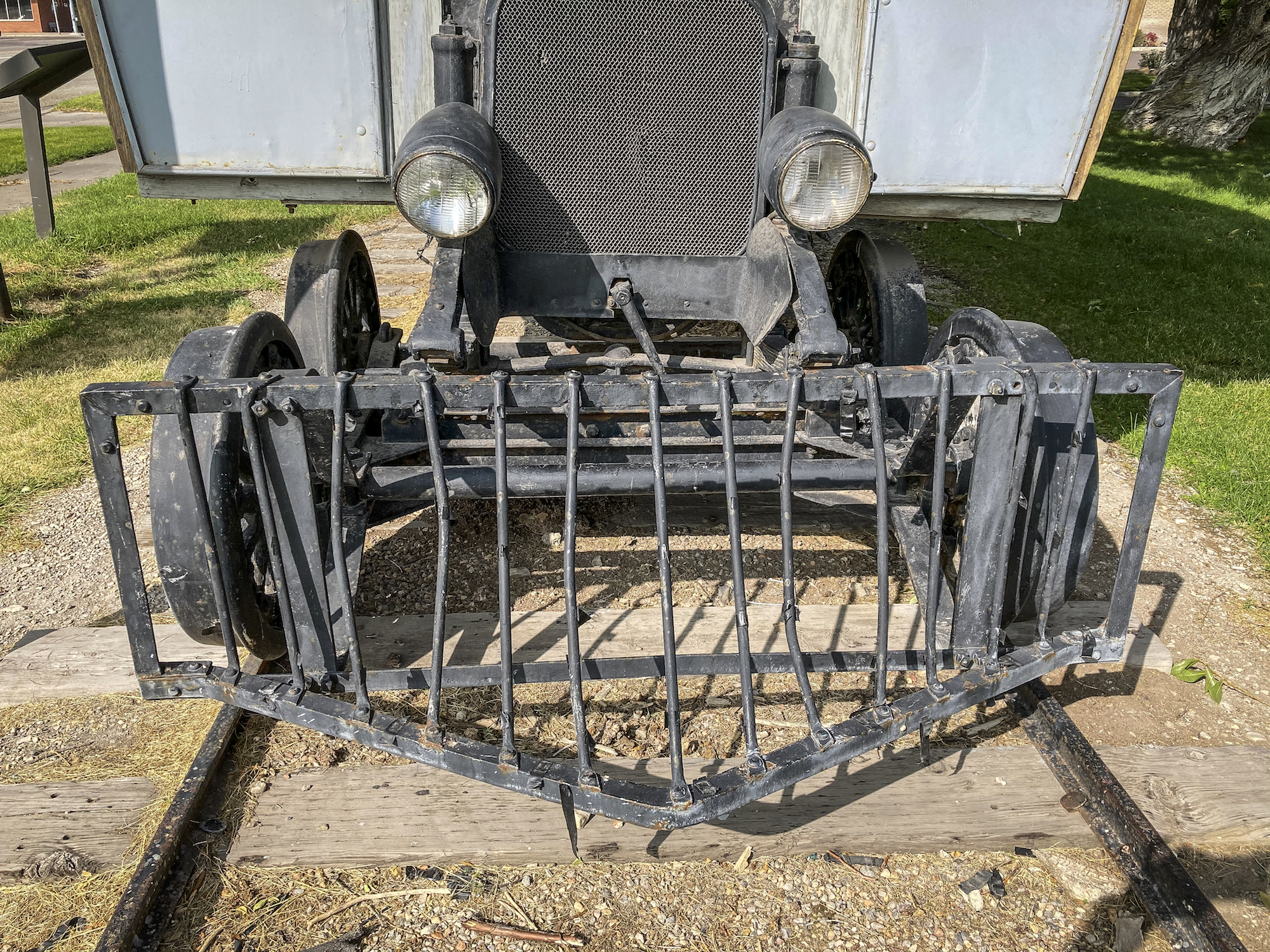
Front of “The Bus” looks like both an automobile and a railroad car.
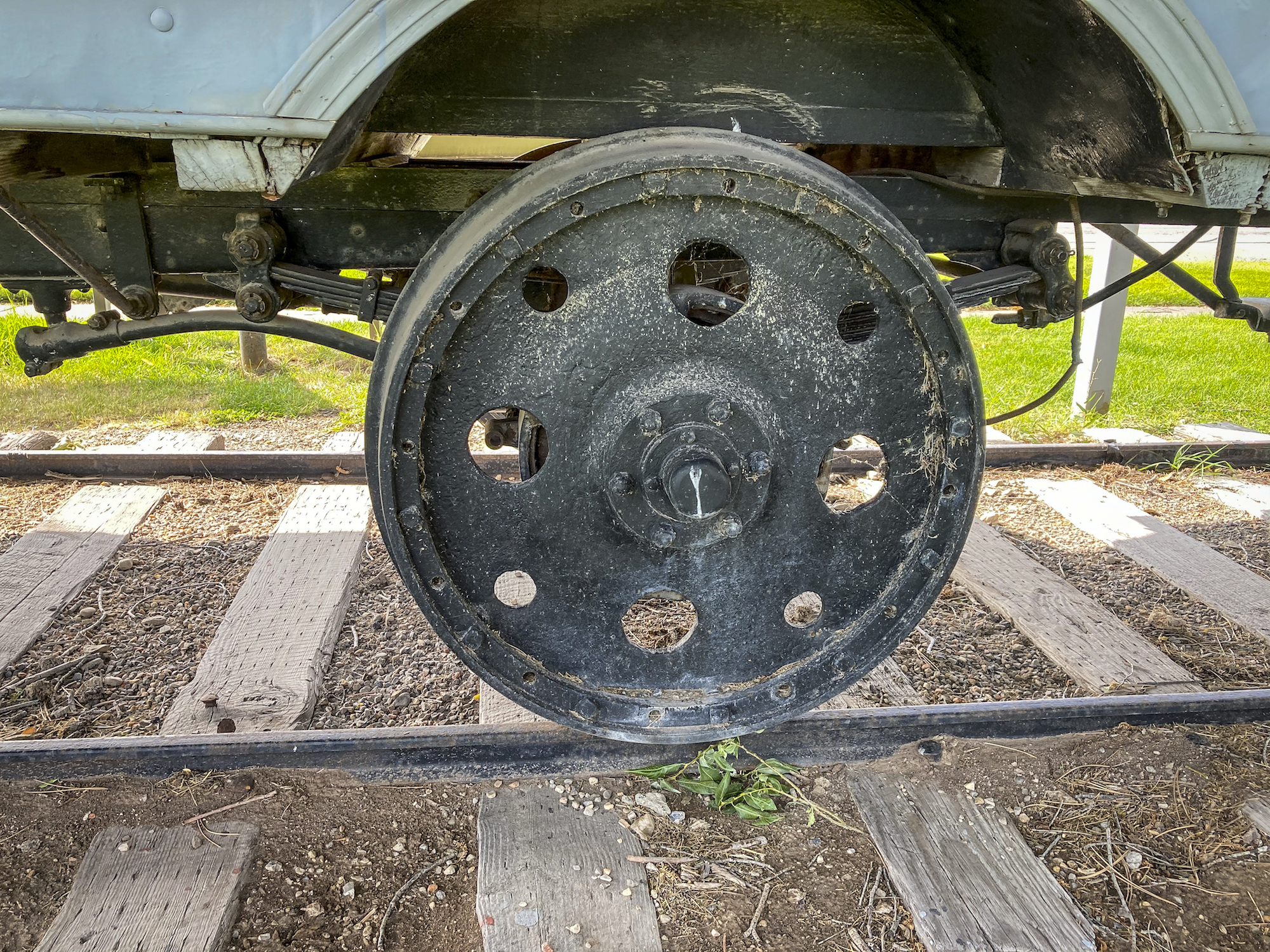
Wheels on “The Bus” (now the song is going through my head….)
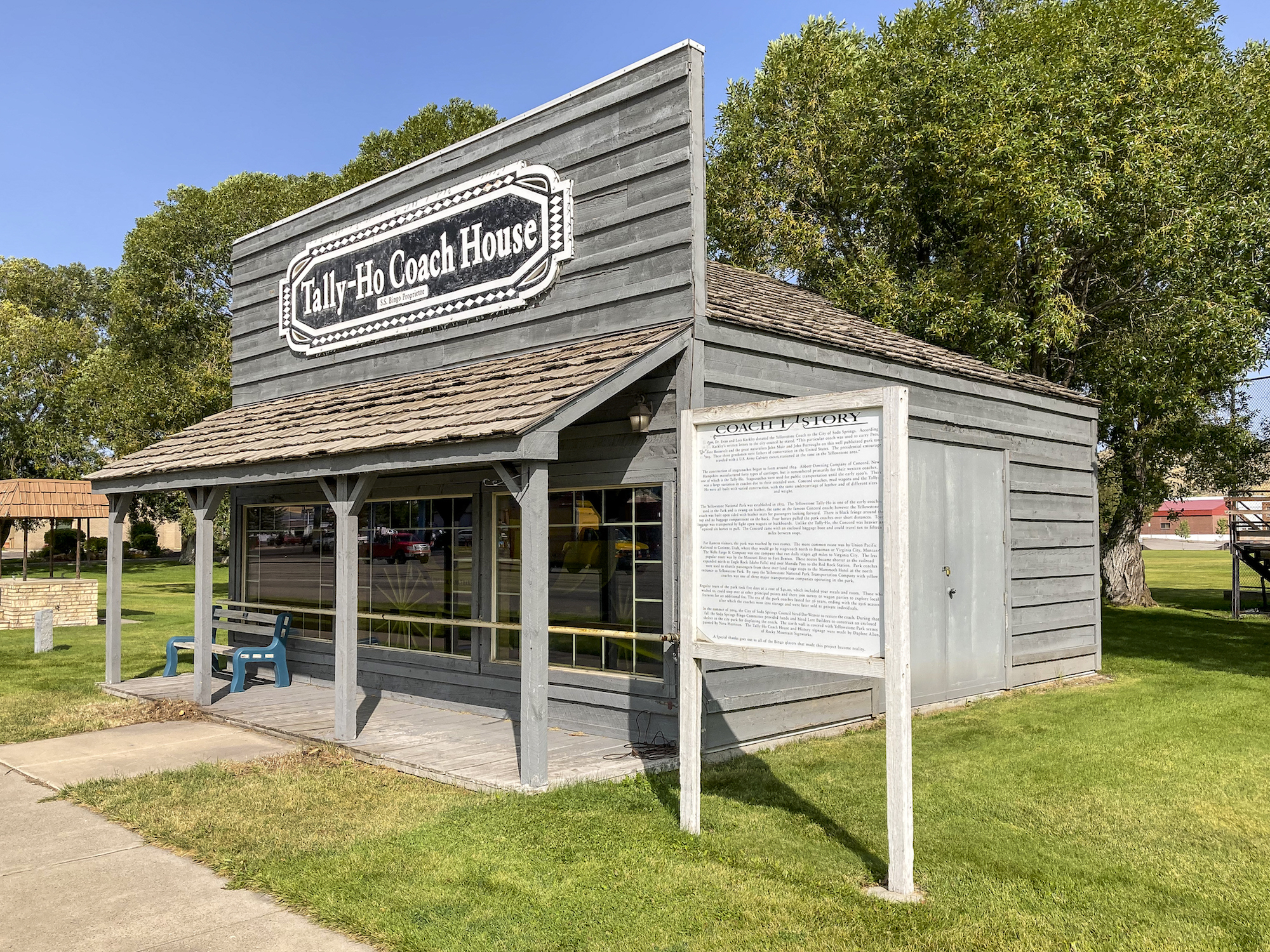
Building constructed to house the Tally-Ho Coach. Information on the storyboard next to the building tells the stagecoach history.
#2 - The Tally-Ho Coach
We’ve all seen stagecoaches in western movies but what do you know about them? Here’s a little history gathered during our pit stop in Soda Springs.
Stagecoach construction began around 1824 and, until the early 1900’s, was a main public transportation source. Coach styles varied due to use but each had the same leather undercarriage.
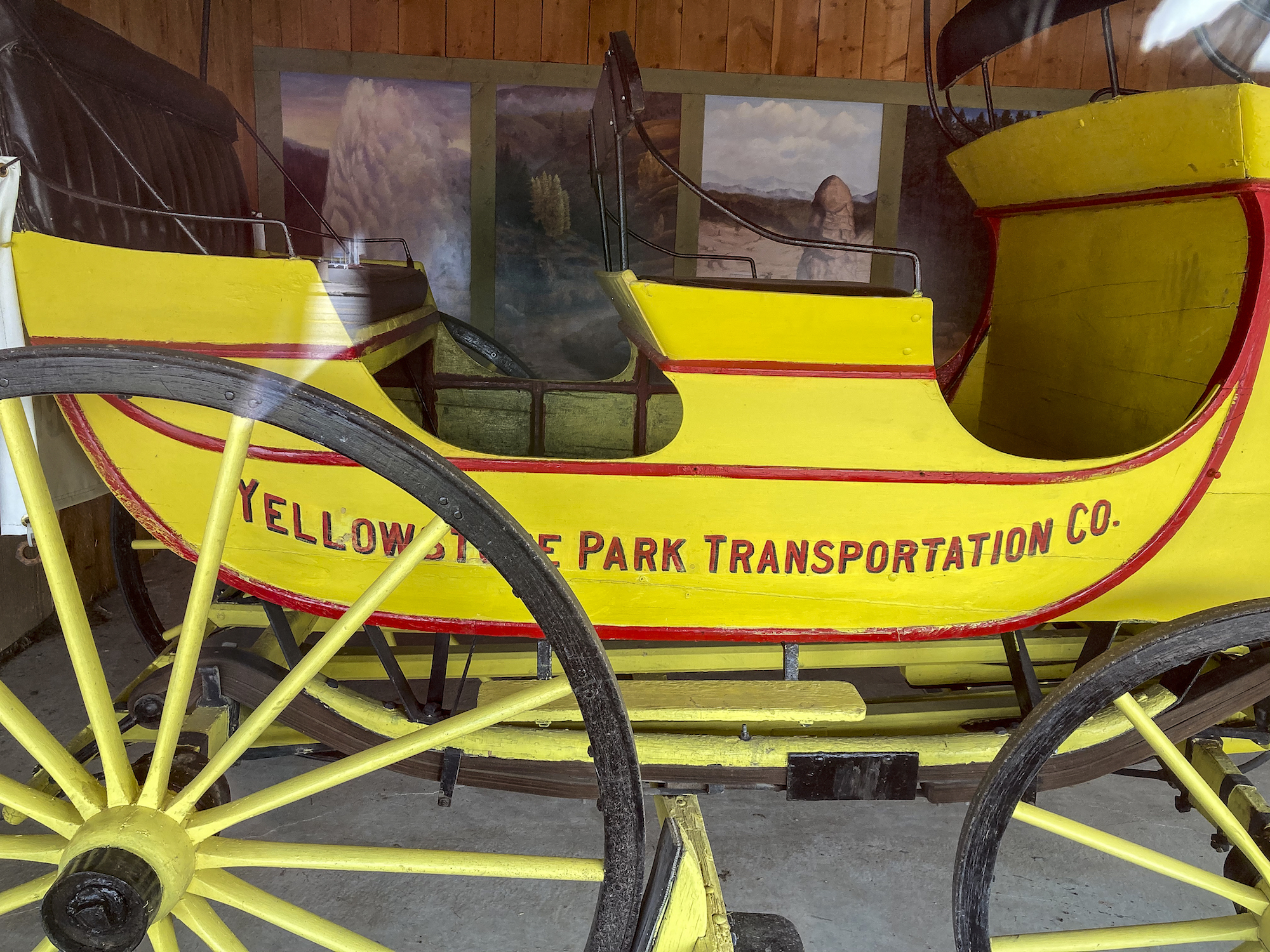
The Yellowstone Park Transportation Company bright yellow and red Tally-Ho coach was a familiar site in the Park.
The Tally-Ho coach was one of the early coaches used in Yellowstone Park. Built with open sides, both leather-covered seats faced forward and a four-horse team pulled the coach.
Regular Park tours took 5 days at a cost of $40, which incidentally included meals and room. (That is equivalent to $1200 in today’s dollars.) Would you enjoy a trip through Yellowstone in this carriage?
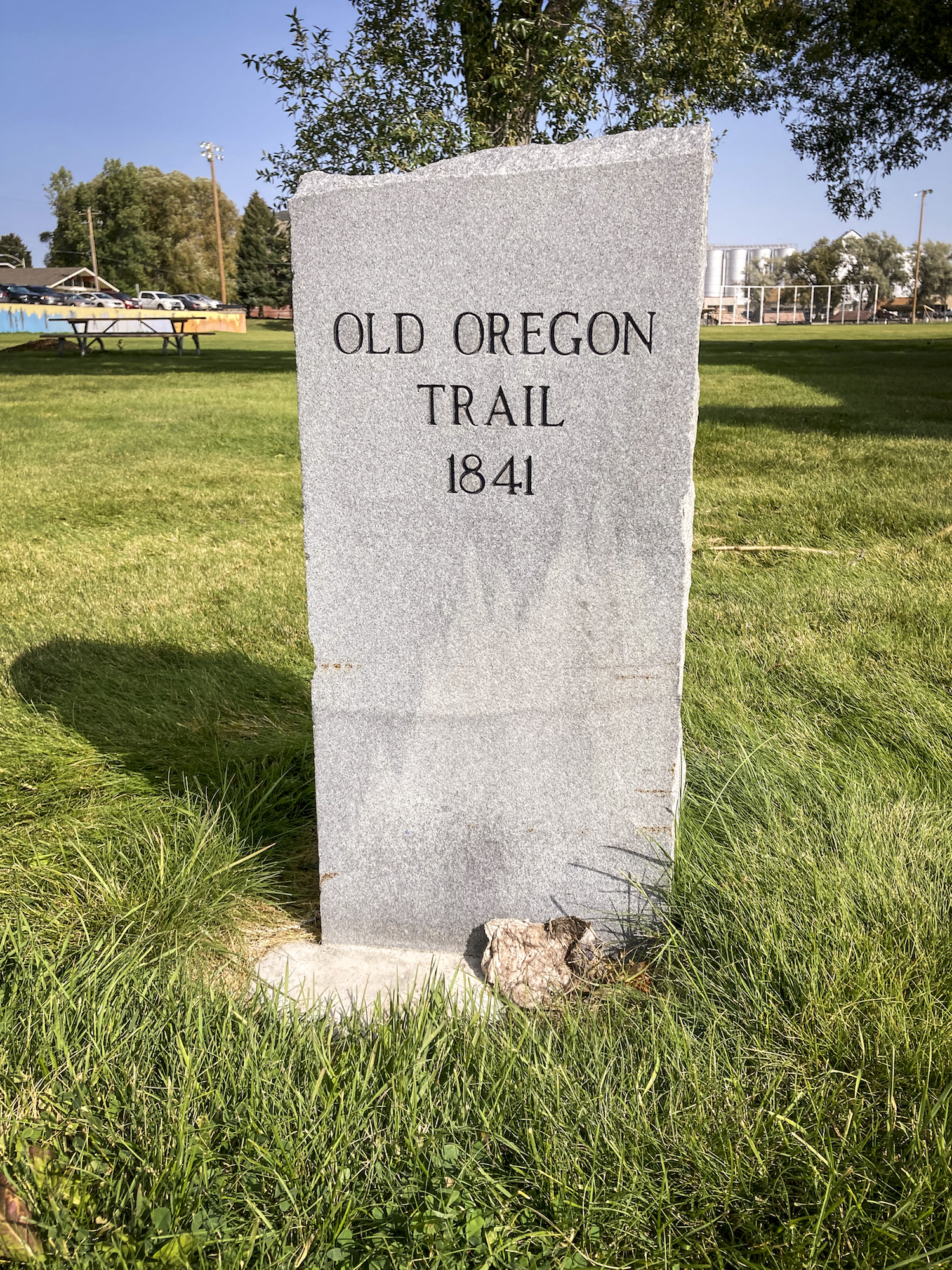
Small engraved stone in Corrigan Park marks part of the Old Oregon Trail.
#3 - The Oregon Trail Marker
The marker was so small I almost missed seeing it. Did you know Soda Springs was an important stop on the Oregon Trail? It was. The abundance of water sources available for the pioneers gave Soda Springs a nickname—the “Oregon Trail Oasis.”
Had we done a little research before hand (trip to the Tetons was last minute), we would have stopped by the Oregon Trail Park. There actual ruts left by Trail emigrants are visible. Next trip!
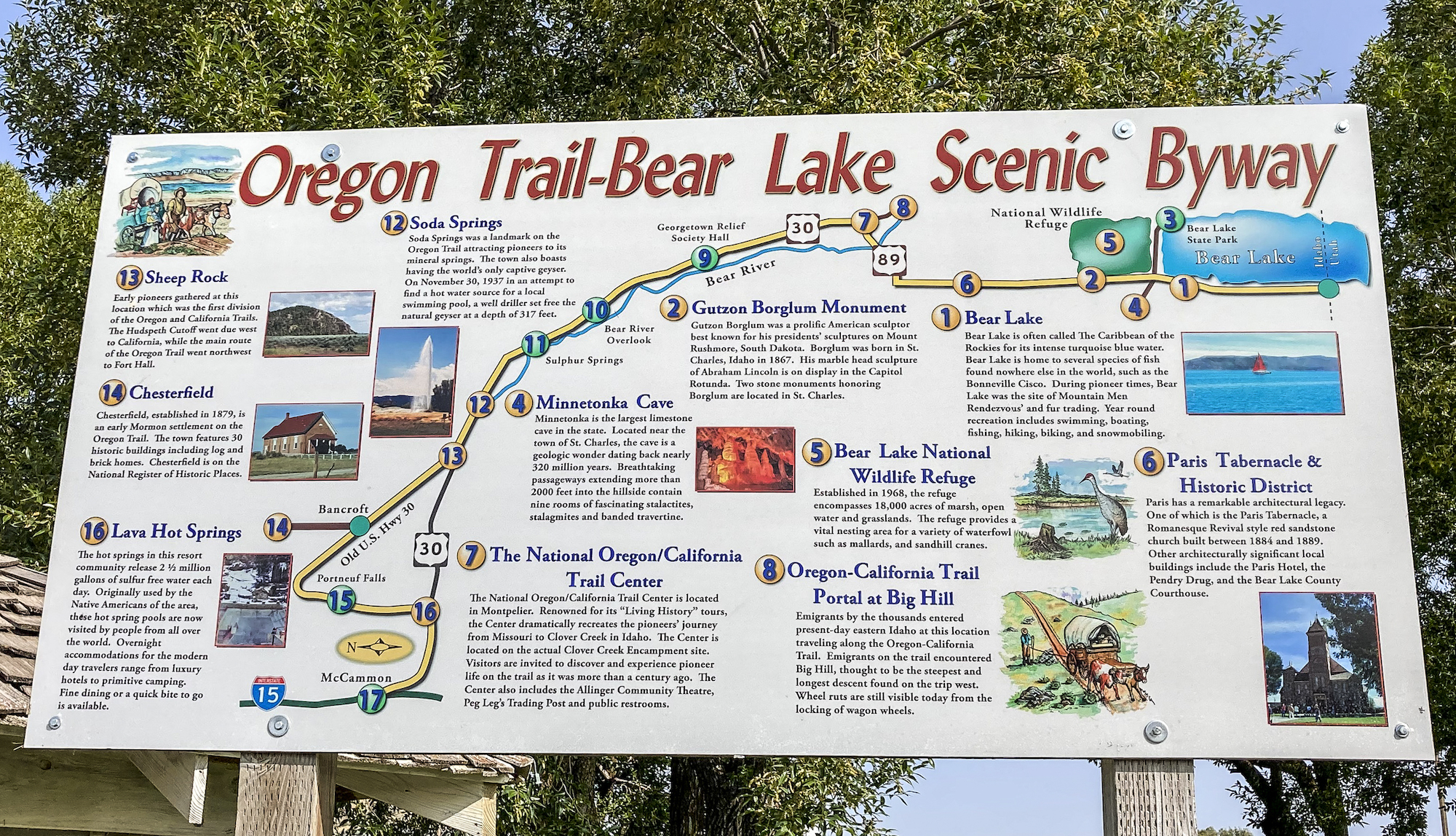
Noted on the sign are other scenic locations near Soda Springs.
# - The Dinky Little Engine
As a lover of railroads and all things miniature, missing The Dinky Engine was a disappointment. However, it was on the other side of the 11-1/2 acre park that I didn’t visit.
So you know what it is, The Dinky Engine was a miniature locomotive used to haul supplies to the dam when the Alexander Reservoir was built in 1924. Rising water caused the little train’s abandonment.
Uncovered in 1976 during reservoir drainage for repairs, the Union Pacific Railroad restored and gifted the train to Soda Springs.
Summary
Parks are perfect places for pit stops during travel. That is especially true when kids can release pent up energy and adults can rest “road-tired” eyes.
Getting out of the car during our Soda Springs pit stop allowed both stretching the body and expanding the mind. City Park was perfect. It had everything we needed for a quick break….and more
My travel-tired mind had a happy break while I had a quick history lesson reading signs at the park. See how much you can learn on a pit stop!
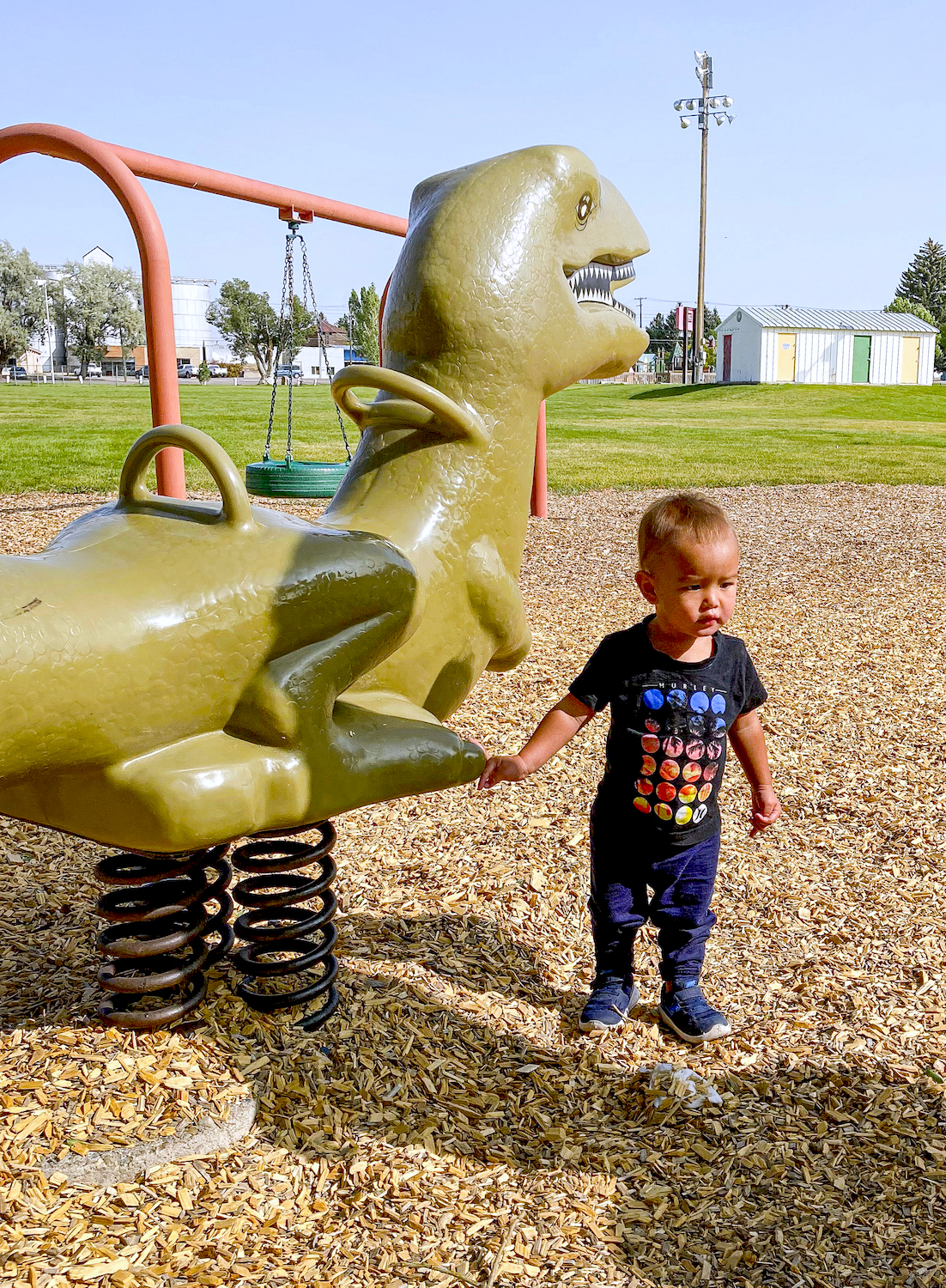
Playground in Corrigan Park
About Soda Springs
Nestled in Idaho’s southeast corner, Soda Springs is within an hour of both the Utah and Wyoming borders. Population in 2018 was 3,032. The town’s rich history began when pioneers headed west for California and Oregon.
Soda Springs name comes from the naturally carbonated water from nearby mineral springs. Two most famous are Steam Boat Springs and Hooper Springs used by early travelers and settlers.
Located in Soda Springs is the only captive geyser in the world, tapped and timed in 1927. It shoots lightly carbonated water into the air, every hour on the hour.
Looking for more small towns to explore?
Check out our "Destinations" page for other Worthy Detour stops.

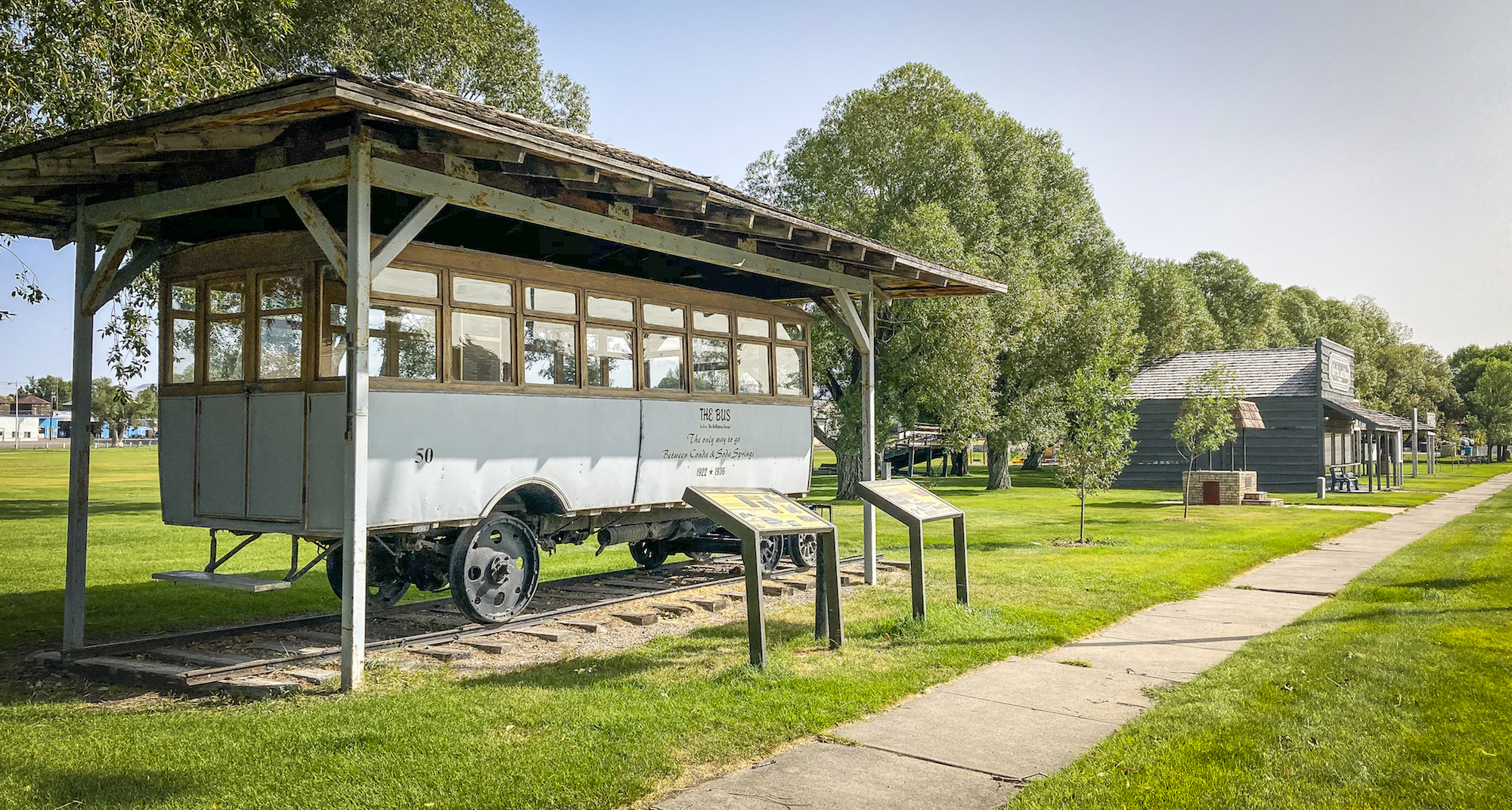
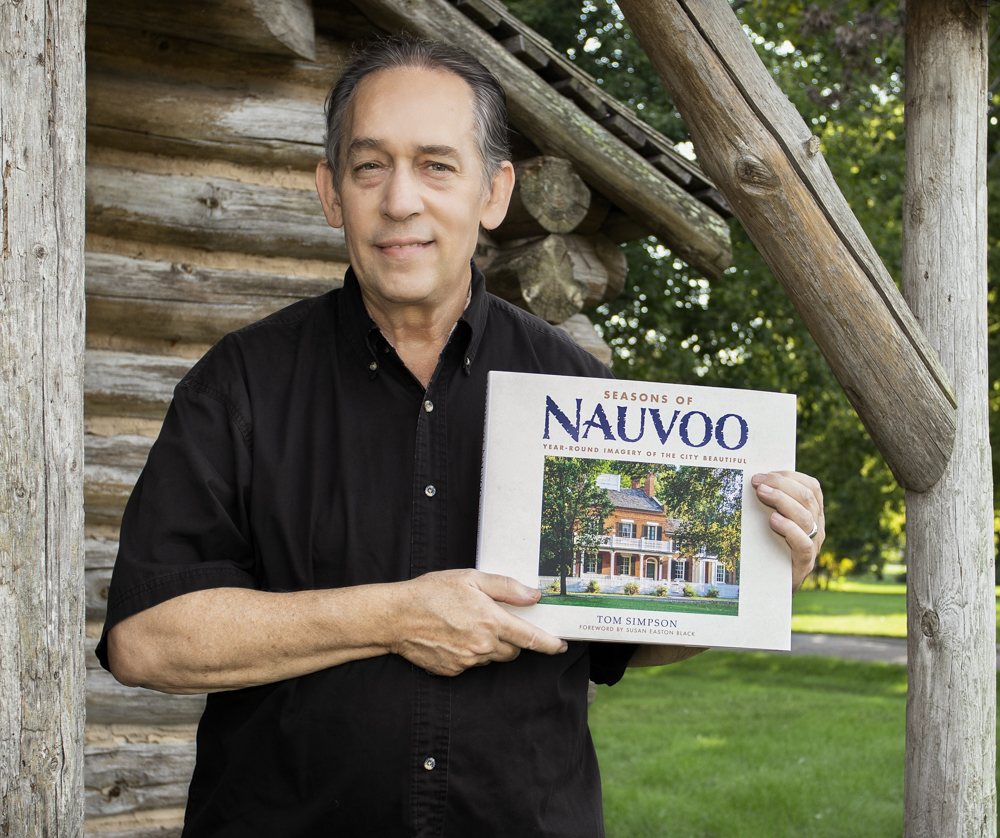
I didn’t know any of this! and i’ve been there before!
Every little town has a story of how it came to be. We live in an amazing country and are surrounded by so much history.